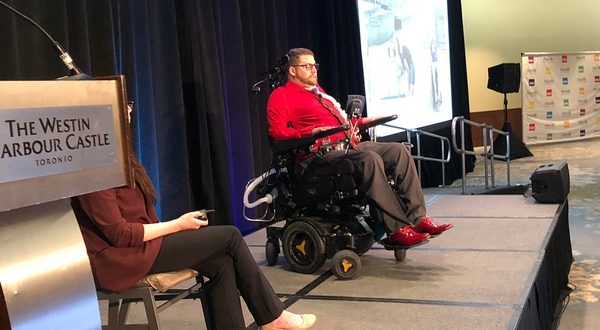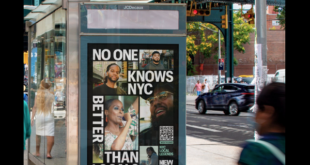[ad_1]
At this year’s IGLTA Convention in Toronto, Drew Cumpson presented on “Making travel more accessible,” an issue he is not only passionate about, but fighting for.
In 2011, Cumpson was on a humanitarian trip with some students to Lima, Peru. They were doing some social justice work—building staircases, administering immunizations, dental healthcare, working on lice campaigns. After spending eight days Lima, his group visited Machu Picchu. Inspired, he decided that day that he would visit all Seven Wonders of the World. Little did he know that his world would change a mere three days later.
On the last day before flying home, Cumpson and his friends decided to spend a day at the beach. He was swimming in the ocean, when a large wave came and threw him against the ocean floor, fracturing his C4 vertebrae and almost drowning him.
He was revived on the beach and transferred into a clinic in Peru. He was eventually airlifted to Kingston General Hospital in Ontario, where he spent 16 months in the intensive care unit. He then spent three years at a rehab facility and then moved into an accessible house that his family had built for him in 2015.
Cumpson was told that he would not walk again and today is confined to a wheelchair. He is on a ventilator and says he “lives on life support.” Doctors also told him that travel was probably not going to be possible, either.
“But when people tell me I can’t do something, I will focus on proving them wrong,” Cumpson said.
He traveled to Mexico in January 2016 to visit Chichén Itzá, the famed Mayan pyramid and another of the Seven Wonders. It was his first trip after his accident, and he explained, “it was a huge learning experience.”
Cumpson said that his two biggest pet peeves when it comes to travel involve hotel rooms and airplanes.
He needs to use a Hoyer lift, a hydraulic lift designed for patients who require 90-100% assistance with getting into or out of bed. When he arrives at a hotel, he needs to know whether there is a six-inch clearance under the bed, so he can operate the lift—and sometimes the staff doesn’t know the answer.
His workaround solution is bringing four wooden blocks with him when he travels. His staff will actually lift the bed frame and place it on the four blocks if there are less than six inches of clearance. Sometimes the rooms are also very small and crowded with furniture, making maneuvering around the room difficult, as well as getting in and out of bed. No two situations are ever the same, he said.
The easiest solution, according to Cumpson, is for hotels to have a Hoyer lift on site. This is not an expensive solution, being perhaps a $2,000 investment. The lifts are portable, so most hotels would only need one. As a side benefit, hotel management would also be able to see whether their beds are compatible with the lift and whether they have to make any modifications.
With airplanes, Cumpson noted that travelers are not able to stay in their own seat when traveling. When he went to Mexico, the airline had a portable Hoyer lift that went down the aisle. They took him out of his chair and down the aisle to where his seat was. But his seat had a stationary armrest that did not go up. Because he is 6-ft tall, he could not simply slide over the armrest—and the lift could not get him any higher. The staff had difficulties getting him into his seat, and he explained that “it was not done very gracefully.”
Once in Mexico, the airport had no lift and so airline staff simply tried to carry him off the plane. As a result, his vent ended up popping out, and his pants ended up around his knees, hardly a dignified arrival to a new country.
Cumpson said that there is a push now to allow travelers to stay in their wheelchairs and not worry about transferring. It is a safety issue for many travelers. There are available restraint latches on airplanes that could be used to tie down a chair, similar to what Cumpson uses every day to be secured in his car. He noted that they are also used to tie down cargo underneath and are very secure. Proponents of this idea are currently trying to get airlines and airplane manufacturers on board.
Last summer, Cumpson also traveled to Vancouver.
“I have not let the disability stop me from traveling,” he said. “I did not let it stop me from getting my degree in hotel and food administration from the University of Guelph in 2016. And so, I continue to push forward to make travel more accessible for all.”
According to Cumpson, the accessible travel industry is expected to be worth $205 billion by 2025. The market itself consists of approximately 1 billion people around the world.
“This is a huge market that is underrepresented and it is forgotten about,” he said. “People have not put much thought into it.”
[ad_2]You can read more of the news on source
 Travelsmart
Travelsmart



